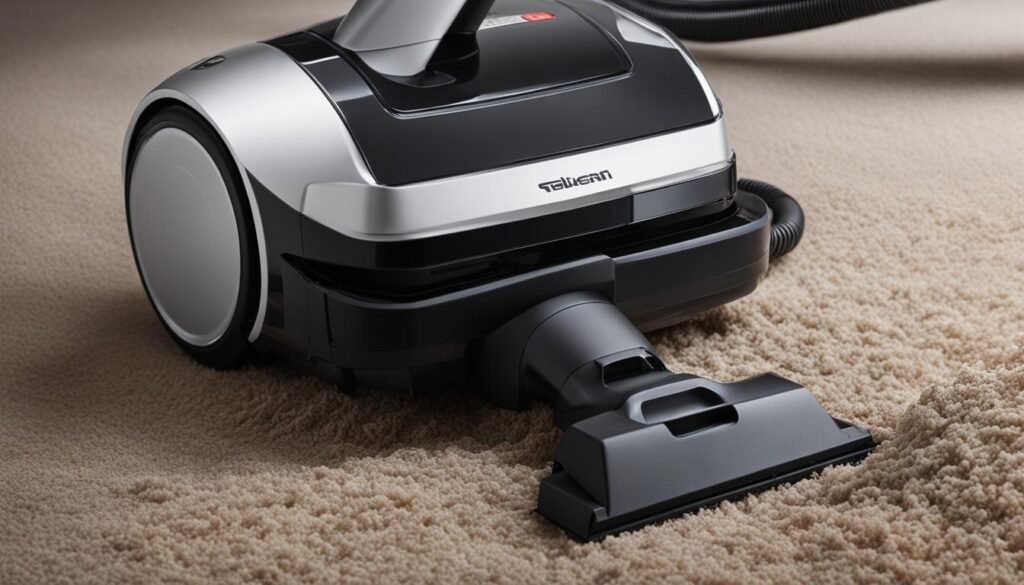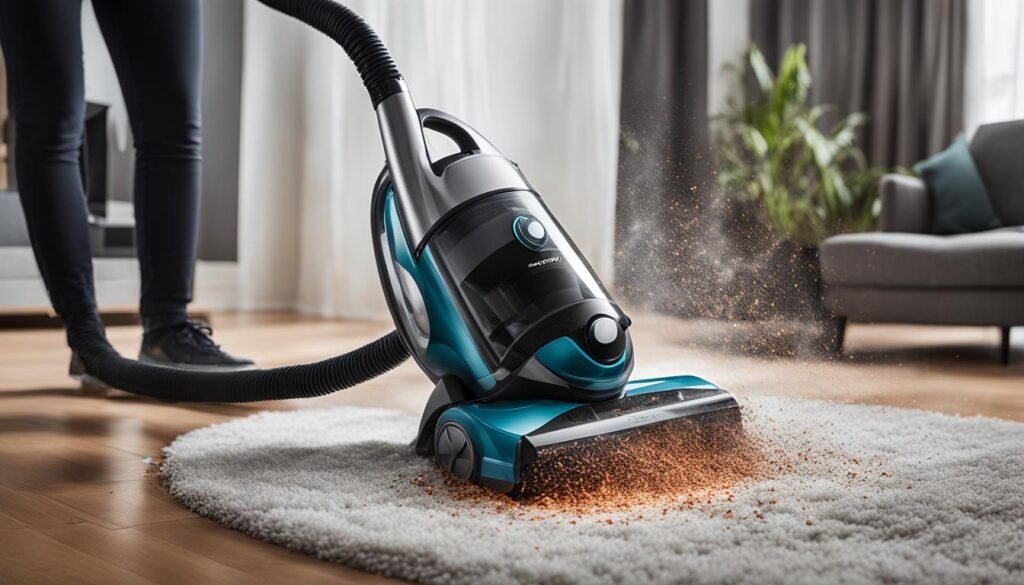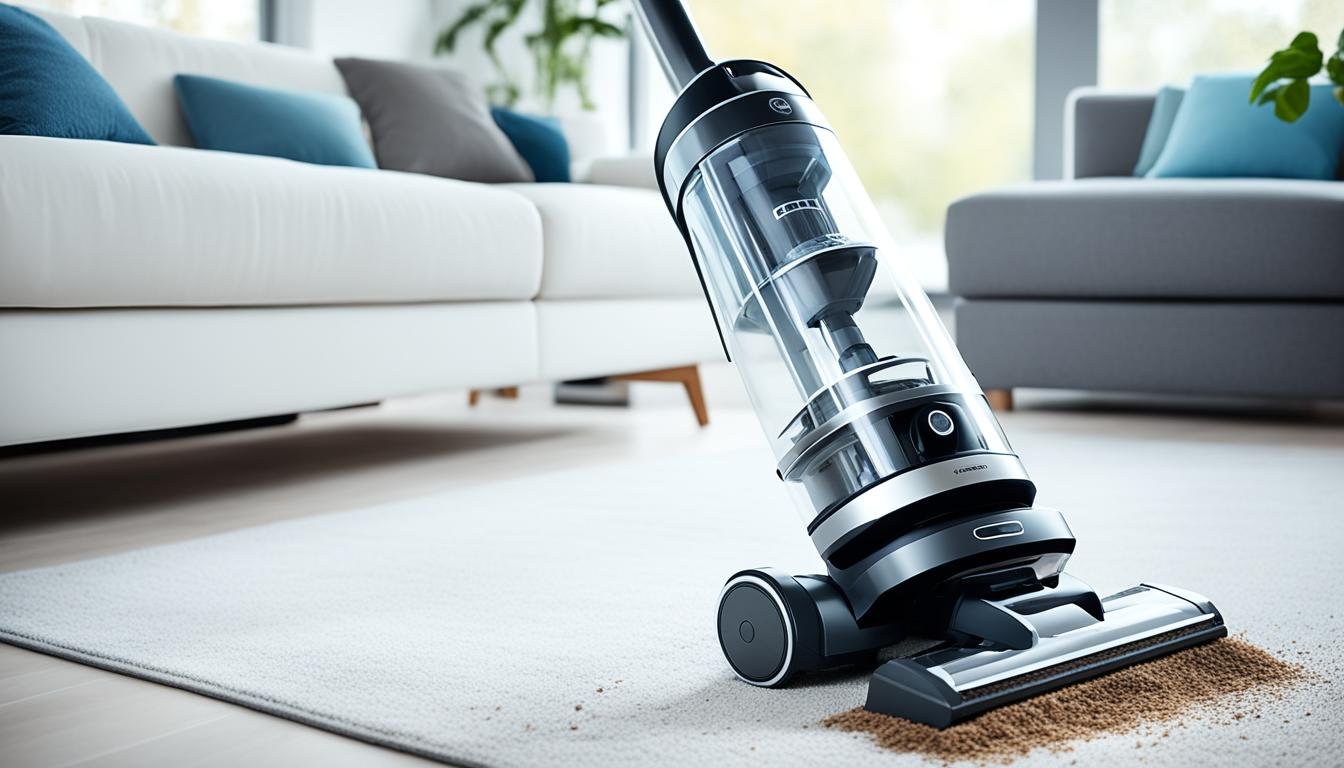When it comes to keeping our homes clean and free from dust and dirt, we rely on the power of vacuum cleaners. These handy devices utilize suction to effectively remove debris from our carpets, floors, and upholstery, making cleaning tasks a breeze. But what makes a vacuum cleaner truly powerful and efficient? Let’s explore the top features that you should consider when comparing different models and brands.
First and foremost, the motor input power of a vacuum cleaner is a crucial factor to consider. This specification is typically measured in watts, indicating the amount of electrical energy the motor consumes. When comparing vacuum cleaners, make sure to compare machines with the same unit of measurement, whether it’s watts or amps. A higher motor input power means more suction power, allowing for better dirt and debris pickup.
In addition to motor input power, two other important specifications to evaluate are water lift and airflow. Water lift, also known as sealed suction, measures how well the vacuum cleaner performs as the bag fills and the filters load. A higher water lift rating indicates a stronger suction power even as the bag fills up. On the other hand, airflow is a critical factor in determining a vacuum cleaner’s cleaning ability. It moves the dirt from surfaces to the dust bag or container, ensuring a thorough cleaning. Canister vacuum cleaners should have an airflow rating of 100 CFM (cubic feet per minute) or more and a water lift of 90 inches or more for optimal performance.
Upright vacuum cleaners come in different designs, with direct air or dirty air uprights typically rated in amps, while bypass uprights provide airflow ratings. High-performing uprights should offer 60 CFM or better to ensure efficient cleaning.
Key Takeaways:
- When comparing vacuum cleaners, consider motor input power as it determines the suction power of the device.
- Water lift is another important specification that indicates how well the vacuum cleaner performs as the bag fills and filters load.
- Airflow rating is crucial for assessing a vacuum cleaner’s cleaning ability.
- Canister vacuum cleaners should have an airflow rating of 100 CFM or more and a water lift of 90 inches or more.
- Upright vacuum cleaners vary in design, with direct air or dirty air uprights typically rated in amps, while bypass uprights provide airflow ratings.
Types of Vacuum Cleaners and Their Performance
When it comes to choosing a vacuum cleaner, there are various types available, each offering different performance characteristics. Understanding these types can help you make an informed decision based on your cleaning needs. Let’s explore some of the most popular types of vacuum cleaners:
1. Upright Vacuum Cleaners
Upright vacuum cleaners are a common choice due to their convenience and versatility. They come in two designs – direct air and bypass motor.
- Direct Air Uprights: Rated in amps, direct air uprights provide powerful suction ideal for deep cleaning carpets and removing stubborn dirt.
- Bypass Uprights: These models offer airflow ratings, making them more suitable for above-floor cleaning tasks, such as curtains or upholstery.
2. Canister Vacuum Cleaners
Canister vacuum cleaners are known for their high airflow and water lift capabilities, making them effective at capturing dirt from both floors and above-floor areas. These versatile vacuums often come with various attachments for specialized cleaning.
3. Bagless Vacuum Cleaners
Bagless vacuum cleaners have gained popularity in recent years for their convenience and cost-effectiveness. Instead of using disposable bags, they utilize dust containers that can be emptied and reused, saving you money and reducing environmental waste.
4. Cordless Vacuum Cleaners
Cordless vacuum cleaners offer the ultimate flexibility in cleaning. With no cords to limit your movement, you can easily maneuver around furniture and reach tight spaces. Cordless vacuums are powered by rechargeable batteries, allowing you to clean multiple areas without the hassle of finding power outlets.
By understanding the various types of vacuum cleaners and their performance characteristics, you can choose the one that best suits your cleaning needs. Whether you prefer the power of uprights, the versatility of canisters, the convenience of bagless designs, or the flexibility of cordless models, there’s a vacuum cleaner out there for you.

| Brand | Description |
|---|---|
| Dyson | Known for their innovative technology and powerful suction, Dyson vacuums are a top choice for many consumers. |
| Shark | Shark vacuums combine performance and affordability, offering a range of models for different cleaning needs. |
| Miele | Miele is synonymous with quality and durability. Their vacuum cleaners are known for their powerful cleaning performance and longevity. |
| Hoover | With a long history in the industry, Hoover manufactures a wide range of vacuum cleaners that cater to different budgets and preferences. |
Suction Power and Cleaning Efficiency
Suction power is a key factor that greatly influences the cleaning efficiency of a vacuum cleaner. A stronger suction power ensures better pickup of dirt and debris, resulting in a more thorough cleaning experience. When searching for the best vacuum cleaner, it’s crucial to consider the wattage or amperage of the motor as this directly correlates to the suction power.
However, relying solely on technical specifications may not provide a complete picture of a vacuum cleaner’s performance. That’s where vacuum cleaner ratings and reviews come into play. By reading the experiences and opinions of other users, you can gain valuable insights into the cleaning performance and overall satisfaction with different models.
When researching vacuum cleaner reviews, pay attention to the cleaning efficiency mentioned by users. Look for consistent feedback on the ability of the vacuum cleaner to effectively remove dirt and dust from various surfaces. Additionally, consider the ratings given to different models to gauge their reliability and performance.
By combining the knowledge of suction power specifications, vacuum cleaner ratings, and user reviews, you can make an informed decision and choose the best vacuum cleaner for your cleaning needs. Achieving exceptional cleaning results is within reach when you select a vacuum cleaner with sufficient suction power and positive feedback from users.
Experience the power of efficient cleaning with a vacuum cleaner that delivers outstanding performance and meets your expectations for cleanliness in your home.
Testimonials:
“I recently purchased a vacuum cleaner with high suction power based on the recommendations I found in vacuum cleaner reviews. I must say, the cleaning efficiency is incredible! It effortlessly removes even the smallest particles from my carpets and floors. I’m amazed by how much cleaner my home looks and feels now!”
– John, Happy Customer
| Vacuum Cleaner Model | Suction Power (Watts) | Cleaning Efficiency Rating (out of 5) |
|---|---|---|
| Brand A – Model X | 1800 | 4.8 |
| Brand B – Model Y | 2000 | 4.9 |
| Brand C – Model Z | 1500 | 4.5 |
| Brand D – Model W | 2200 | 5 |
Table: Comparison of vacuum cleaner models and their suction power ratings along with cleaning efficiency ratings based on user reviews.

Conclusion
Understanding the power of a vacuum cleaner and the importance of suction is crucial when selecting the right cleaning tool. By comparing the motor input power, water lift, and airflow specifications, you can accurately assess the cleaning ability of different vacuum cleaners. These top features of vacuum cleaners provide valuable insights into their performance.
When choosing a vacuum cleaner, it’s essential to consider the different types available, such as upright, canister, bagless, or cordless. Each type has its own advantages and performance characteristics, allowing you to choose a model that best suits your needs and preferences.
However, one of the key factors that directly impacts cleaning efficiency is suction power. Opt for a vacuum cleaner with higher suction power to achieve optimal cleaning results. The wattage or amperage of the motor is a good indicator of suction power, so be sure to take that into account.
By unlocking the power of suction with the right vacuum cleaner, you can take your home’s cleanliness to new heights. So, choose wisely and enjoy a fresh and spotless living environment!
FAQ
What are the primary specifications to consider when comparing vacuum cleaners?
The primary specifications to consider when comparing vacuum cleaners are motor input power, water lift (sealed suction), and airflow. Motor input power is typically measured in watts or amps. Water lift indicates how well the vacuum cleaner performs as the bag fills and the filters load. Airflow is the most important specification that demonstrates cleaning ability, as it moves the dirt from surfaces to the dust bag or container. Canister vacuum cleaners should have an airflow rating of 100 CFM or more and a water lift of 90 inches or more. Upright vacuum cleaners vary in design with direct air or dirty air uprights typically rated in amps, while bypass uprights provide airflow ratings. High-performing uprights should offer 60 CFM or better.
What are the different types of vacuum cleaners?
The different types of vacuum cleaners include upright, canister, bagless, and cordless. Upright vacuum cleaners come in direct air and bypass motor designs, with direct air uprights rated in amps and bypass uprights providing airflow ratings. Canister vacuum cleaners are known for their high airflow and water lift specifications. Bagless vacuum cleaners eliminate the need for disposable bags, providing a convenient and cost-effective solution. Cordless vacuum cleaners offer flexibility and convenience by allowing you to clean without the limitation of a power cord.
How does suction power impact the cleaning efficiency of a vacuum cleaner?
Suction power plays a crucial role in the cleaning efficiency of a vacuum cleaner. Higher suction power allows for better dirt and debris pickup, ensuring a thorough cleaning. When choosing a vacuum cleaner, consider the wattage or amperage of the motor as an indication of its suction power. Additionally, reading vacuum cleaner reviews and ratings can provide insights from other users about the cleaning performance and overall satisfaction with different models. By selecting the best vacuum cleaner with sufficient suction power, you can achieve exceptional cleaning results.
How can I unlock the power of suction with the right vacuum cleaner?
To unlock the power of suction, you need to select the right vacuum cleaner based on its specifications and type. Compare motor input power, water lift, and airflow to assess the cleaning ability of different vacuum cleaners. Consider the types of vacuum cleaners available, such as upright, canister, bagless, or cordless, to find a model that suits your needs. Opt for a vacuum cleaner with higher suction power for optimal cleaning efficiency. With the right vacuum cleaner, you can unlock the power of suction and elevate your home’s cleanliness.





Leave a Reply